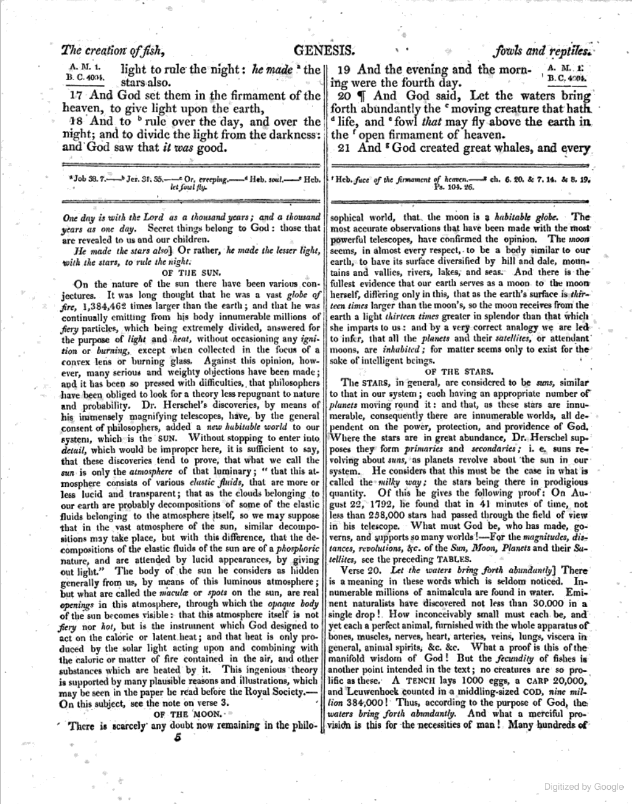Adam Clarke writes that the moon is a habitable globe.
- Type
- Book
- Hearsay
- Direct
- Reference
Adam Clarke, commentary on Genesis 1:17–21, in The Holy Bible: Genesis, Exodus, Leviticus and Numbers (London: Joseph Butterworth and Son, 1825), 5
- Scribe/Publisher
- Joseph Butterworth and Son
- Audience
- Reading Public
- Transcription
OF THE MOON.
There is scarcely any doubt now remaining in the philosophical world, that the moon is a habitable globe. The most accurate observations that have been made with the most powerful telescopes, have confirmed the opinion. The moon seems, in almost every respect, to be a body similar to our earth, to have its surface diversified by hill and dale, mountains and vallies, rivers, lakes, and seas. And there is the fullest evidence that our earth serves as a moon to the moon herself, differing only in this, that as the earth's surface is thirteen times larger than the moon's, so the moon receives from the earth a light thirteen times greater in splendor than that which she imparts to us: and by a very correct analogy we are led to infer, that all the planets and their satellites, or attendant moons, are inhabited; for matter seems only to exist for the sake of intelligent beings.
- Citations in Mormonr Qnas
The B. H. Roberts Foundation is not owned by, operated by, or affiliated with the Church of Jesus Christ of Latter-day Saints.

